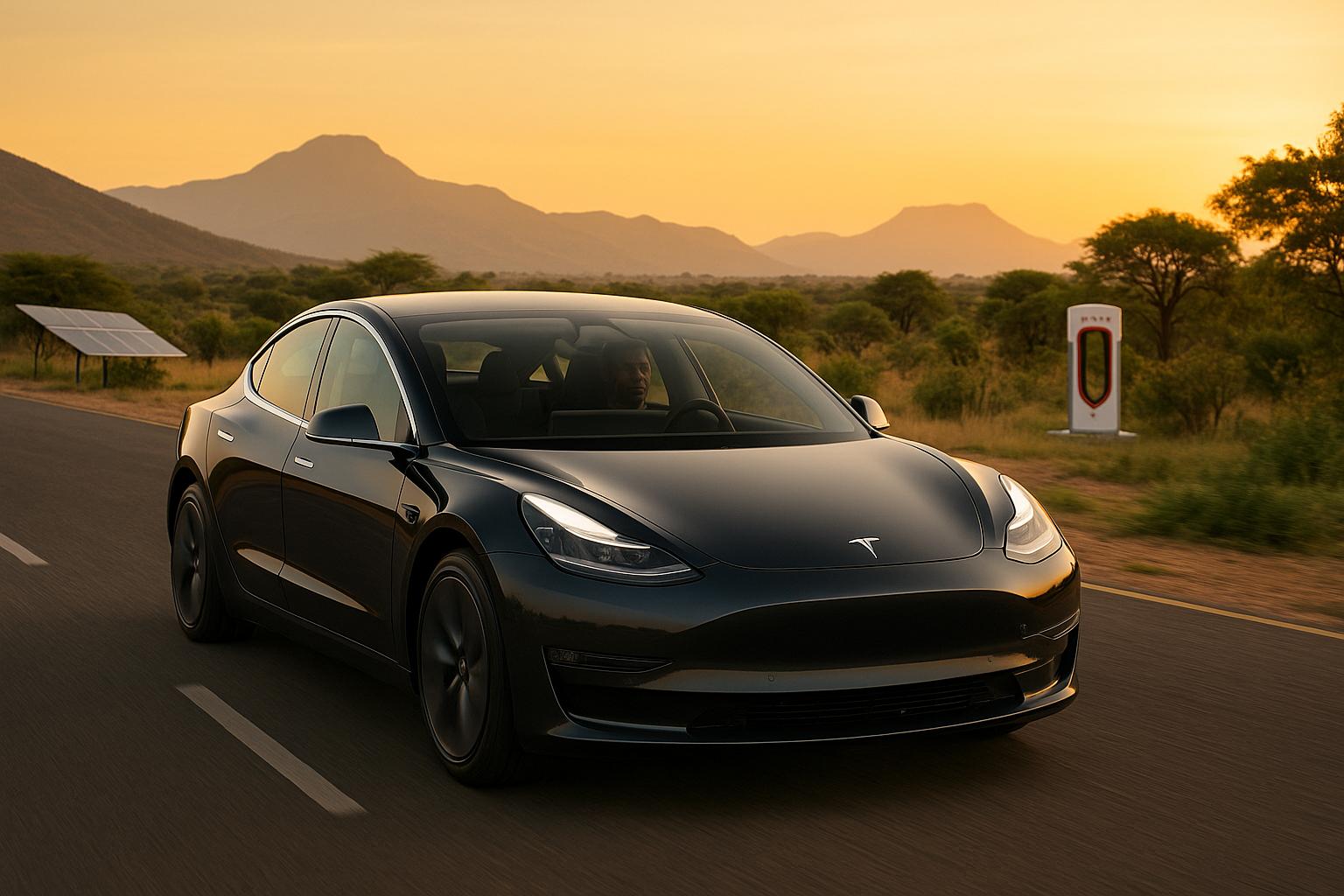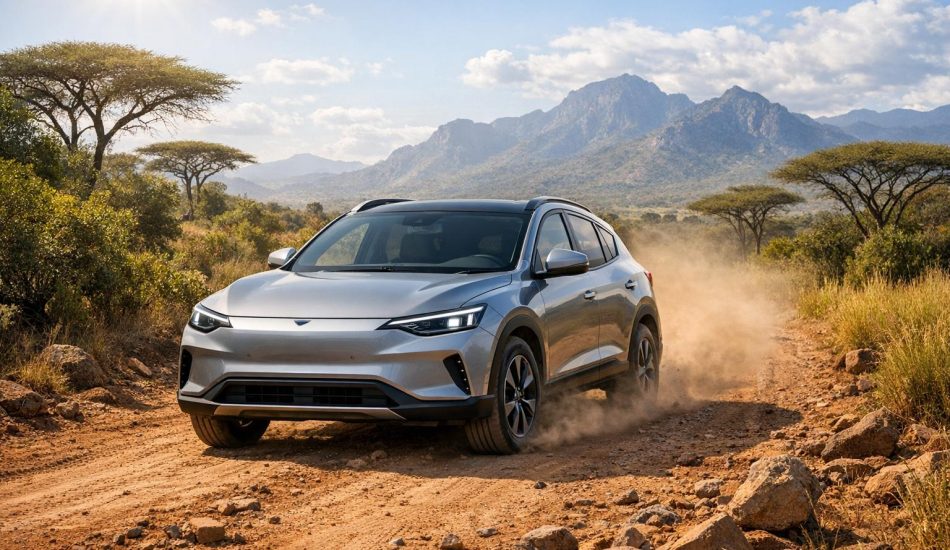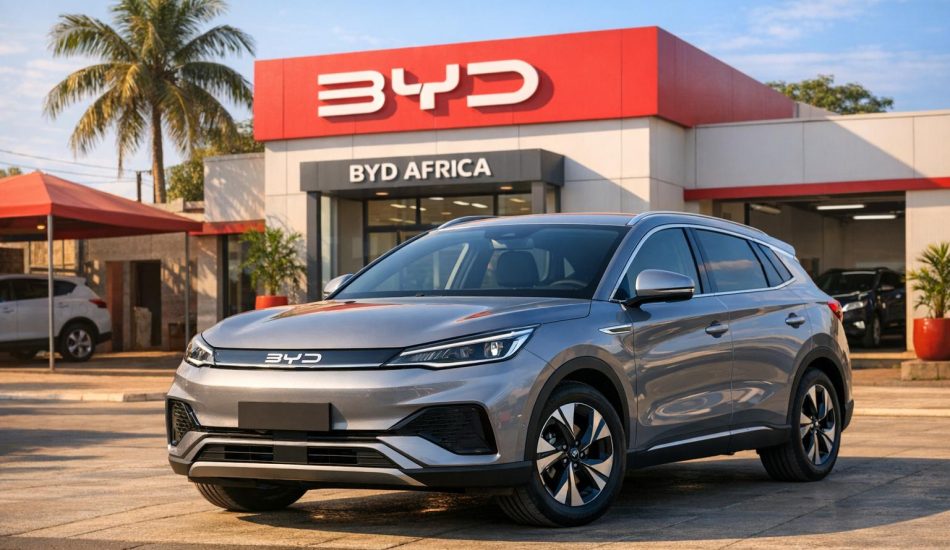
If you’re in Africa and considering a Tesla in 2025, here’s the reality: high import costs, taxes, and limited infrastructure make owning one a challenge. Prices are significantly higher than in the U.S. due to duties, shipping, and currency fluctuations. Here’s what you need to know:
- Model 3: The most affordable Tesla, but still expensive after import costs. Best for city driving with limited charging infrastructure.
- Model Y: Offers more space and better ground clearance, making it more suitable for varied road conditions. A solid choice for families.
- Model S: A luxury sedan with a high price tag, appealing mainly to affluent buyers. Limited practicality for rural areas.
- Model X: The priciest option, designed for those seeking performance and status. Its higher ground clearance helps on uneven roads.
Key Insight: The Model Y strikes the best balance for African buyers, offering functionality and better compatibility with local conditions. However, Tesla ownership remains limited to wealthier individuals due to high costs and sparse charging networks. South Africa offers the most favorable conditions for Tesla buyers compared to other regions.
Tesla Launches in AFRICA – Ford’s $15B Nightmare – Porsche lost ALL profits – Tesla dead in 10Years?
1. Tesla Model 3
The Tesla Model 3 is often seen as Tesla’s most accessible vehicle. But for buyers in Africa, the term "entry-level" takes on a different meaning due to the added costs of import duties, taxes, shipping fees, and currency fluctuations, all of which significantly drive up the price.
Price (including import costs and taxes)
While the Model 3 is competitively priced in the U.S., the story is very different in Africa. Import duties, value-added taxes, and shipping fees from Tesla’s manufacturing hubs to African ports add a hefty premium. On top of that, transporting the car inland from the port and fluctuations in currency exchange rates make the final price unpredictable. This complex pricing structure directly impacts both affordability and the practicality of owning an electric vehicle in the region.
Affordability and incentives
For many African consumers, these additional expenses put the Model 3 well beyond reach. Even in countries that offer some incentives for electric vehicles – such as reduced import duties – the overall cost remains steep compared to local income levels. This limits the Model 3’s appeal to a small segment of affluent buyers.
Suitability for African infrastructure
The Model 3’s long driving range makes it a viable option for intercity travel, which is helpful in areas where charging networks are still sparse. However, the limited availability of Tesla Supercharger stations across the continent means most owners will need to rely on home charging setups or third-party charging networks. Tesla’s over-the-air updates are a major advantage, allowing for performance improvements without requiring visits to service centers – something especially useful in places where service facilities are scarce.
That said, the Model 3 is best suited for urban environments with paved roads. Its design may not be ideal for rough or rural terrains, although the all-wheel-drive option provides better traction for such conditions. However, this feature comes at an additional cost, further raising the vehicle’s price.
Market availability
Tesla does not have official sales channels in most African nations. As a result, buyers often turn to third-party importers, which can lead to long wait times, limited warranty coverage, and financing hurdles. Without Tesla’s official financing programs, buyers must rely on local banks, where loans often come with less favorable terms. Since the Model 3 is often classified as a luxury purchase, these financing challenges only add to the difficulties of owning one in Africa.
2. Tesla Model Y
Like the Model 3, the Tesla Model Y’s pricing in African markets is shaped by additional costs such as import duties and taxes. Positioned between the Model 3 and Model X, the Model Y offers more space but comes at a noticeably higher price for buyers in Africa. Let’s take a closer look at its pricing and affordability.
Price (including import costs and taxes)
In the U.S., the 2025 Tesla Model Y starts at $46,630, with prices climbing to $53,130 depending on the configuration. In South Africa, the Long Range AWD variant is priced at ZAR 849,830, while the standard trim reaches ZAR 1,047,200.
Affordability and Incentives
The higher price tag places the Model Y firmly in the premium segment in African markets. Unfortunately, buyers in key countries like South Africa, Ethiopia, and Nigeria do not benefit from government incentives or subsidies to offset these costs.
3. Tesla Model S
The Tesla Model S is Tesla’s flagship luxury sedan, known for its high-end features and impressive performance. However, in Africa, its premium status comes with unique challenges, particularly due to high costs and the evolving electric vehicle (EV) infrastructure.
Price (Including Import Costs and Taxes)
In African markets, the price of the Model S is significantly inflated by import duties, shipping fees, and local taxes. These added costs make it a luxury item, accessible primarily to those with substantial purchasing power.
Affordability and Incentives
With its high price tag, the Model S remains a niche choice in Africa. The limited availability of EV incentives means buyers have few options for financial relief to offset the cost. As a result, the car mainly attracts affluent individuals, such as business executives and early adopters of EV technology. These affordability issues play a significant role in shaping the Model S’s reach and appeal in the region.
Market Availability
Tesla’s direct-to-consumer sales model faces hurdles in many African countries, including regulatory and logistical barriers. The Model S is typically available through imports or select authorized dealers in major cities. However, the lack of widespread service networks means that owners in rural areas may need to travel considerable distances for maintenance, adding another layer of complexity to ownership.
Suitability for African Infrastructure
While the Model S offers features like fast charging and an extended range, its usability in Africa is limited by the scarcity of charging stations and its low ground clearance, which is less suited for rough or uneven roads. In urban areas with better road conditions and access to charging infrastructure, the Model S can deliver the luxurious experience it’s designed for. However, outside these regions, its practicality diminishes significantly.
sbb-itb-99e19e3
4. Tesla Model X
The Tesla Model X stands out as Tesla’s flagship SUV, boasting a sleek design and its signature falcon-wing doors. For buyers in Africa, it’s positioned as a premium choice that blends luxury, high performance, and everyday practicality.
Price (Including Import Costs and Taxes)
When it comes to pricing, the Model X carries a hefty price tag, especially when compared to other Tesla options in the region. Import duties, shipping fees, and local taxes can drive the cost significantly higher than its U.S. base price. Premium variants of the Model X often come with an even steeper markup, making it one of the pricier electric vehicles available.
Affordability and Incentives
With its premium status, the Model X is primarily aimed at buyers with substantial disposable income. In most African countries, government incentives for electric vehicles are either minimal or nonexistent. This means potential buyers are left to shoulder the entire cost, which adds to the Model X’s exclusivity and limits its accessibility to a niche market.
Market Availability
As with other Tesla models, availability in Africa is limited. The Model X is typically sold through specialized importers and a few luxury car dealerships in major cities. However, stock can be unpredictable, often requiring special orders. The scarcity of Tesla service centers in the region also means owners may need to rely on mobile service units or travel longer distances for maintenance and repairs.
Suitability for African Infrastructure
The Model X does have some features that align well with Africa’s diverse infrastructure. Its higher ground clearance and all-wheel-drive system make it more capable on uneven roads and rough terrain. However, like all electric vehicles, it depends heavily on a reliable charging network, which remains a challenge in areas with few fast-charging stations. Additionally, the falcon-wing doors, while visually striking, may pose practical issues in tight parking spaces or areas with low overhead clearance.
Advantages and Disadvantages
When it comes to Tesla models in Africa, each vehicle comes with its own set of perks and challenges. Buyers must weigh the premium features against costs and the realities of local infrastructure. Below is a breakdown of what to expect for each model in the African market.
Tesla Model Comparison for African Markets
| Model | Price Range (Including Import) | Key Advantages | Main Disadvantages | Infrastructure Compatibility |
|---|---|---|---|---|
| Model 3 | $45,000 – $65,000 | Affordable, efficient charging, great for city driving | Limited rear space, low ground clearance | Good – works well with most existing networks |
| Model Y | $55,000 – $75,000 | Higher clearance, spacious cargo, family-friendly | Costs more than Model 3, positioned as a premium option | Excellent – handles varied terrain with ease |
| Model S | $85,000 – $120,000 | High-end luxury, long range, premium interior | Very expensive, limited service options, costly maintenance | Good – advanced charging capabilities are a plus |
| Model X | $95,000 – $140,000 | Falcon-wing doors, elevated seating, all-wheel drive | Highest price tag, complex door design, tricky to park | Excellent – robust build and higher clearance suit diverse conditions |
While each model has its own pros and cons, some trends apply across the entire Tesla lineup in Africa.
Universal Advantages Across All Models
Tesla vehicles bring several benefits that resonate across the board in African markets:
- Cutting-Edge Technology: Tesla’s over-the-air software updates ensure owners can access new features without needing to visit a service center. This is particularly useful in regions with limited official Tesla support.
- Energy Efficiency: With efficient battery systems and regenerative braking, Teslas maximize their driving range – an essential feature in areas where charging stations are sparse.
- Eco-Friendly Appeal: Zero-emission vehicles align with global and regional sustainability goals, especially as carbon reduction policies continue to gain traction.
Common Challenges for African Buyers
Despite their perks, Tesla ownership in Africa doesn’t come without hurdles:
- High Import Costs: Import duties, VAT, and other fees significantly inflate the final price, making Teslas a luxury purchase for most.
- Limited Service Options: With few service centers, many owners must rely on independent mechanics, which can complicate maintenance.
- Charging Network Gaps: Inconsistent charging infrastructure means many owners rely on home setups or third-party solutions, which may not always meet expectations.
- Parts and Warranty Issues: Imported parts often come with long wait times and higher costs. Warranty coverage is also limited in regions without an established Tesla presence.
Regional Market Variations
The challenges and opportunities for Tesla vehicles differ widely across African regions. Here’s a closer look:
- South Africa: This market has relatively better conditions, with established import channels, a growing charging network, and some localized service options. However, high import duties and currency fluctuations keep prices steep.
- Emerging Markets: In these areas, Tesla ownership is mostly limited to affluent buyers who can afford to import through specialized channels. Sparse charging infrastructure and minimal service support make these vehicles less practical for everyday use.
- Other Regions: Many regions face significant obstacles, including limited availability, underdeveloped charging networks, and virtually no service infrastructure. Here, owning a Tesla often becomes more of a status symbol than a practical transportation choice.
Ultimately, choosing the right Tesla model in Africa comes down to individual priorities. The Model 3 is ideal for budget-conscious buyers looking for an entry point. Families might lean toward the spacious and versatile Model Y. Those seeking luxury will likely gravitate to the Model S, while tech enthusiasts and adventurers may find the Model X hard to resist.
Conclusion
After examining the pricing and infrastructure details, one model stands out for African buyers exploring Tesla’s 2025 lineup.
The Tesla Model Y proves to be the most practical option for the majority of African buyers. It strikes a solid balance between cost, functionality, and adaptability to African road conditions. While it costs more than the Model 3, the Model Y justifies the extra expense with its higher ground clearance and increased cargo capacity.
For those keeping a close eye on their budget, the Model 3 remains the most affordable entry point into Tesla’s lineup. Its performance shines in urban settings with more developed charging networks, making it a great fit for city residents in larger African markets.
Families seeking flexibility will appreciate the Model Y. Its ability to handle rougher terrain, paired with a spacious interior, makes it well-suited for family needs in diverse environments.
On the luxury end, the Model S and Model X cater to buyers who value premium features and can manage the higher costs associated with specialized service and maintenance. These models are best suited for wealthier buyers who can afford the additional expenses.
South African buyers currently benefit from the most developed conditions for Tesla ownership. In contrast, buyers in other emerging African markets may face challenges with infrastructure, which could limit the practicality of owning an EV.
For most African buyers considering a Tesla in 2025, the Model Y offers the best combination of affordability and long-term usability, tailored to the unique demands of the region.
Visit EV24.africa to explore financing solutions that can make Tesla ownership a reality across African markets.
FAQs
What challenges might African buyers face when purchasing a Tesla in 2025?
African buyers looking to purchase a Tesla in 2025 might face some notable hurdles. One of the biggest obstacles is higher costs. Import duties, shipping fees, and taxes can significantly inflate the price – sometimes by as much as 50% to 100% over the original MSRP. For many, this makes owning a Tesla a financial stretch.
Another key issue is the lack of charging infrastructure in many parts of the continent. Without reliable charging stations, owning and operating an electric vehicle becomes a challenge, particularly in areas where EV support systems are still in their infancy. On top of that, buyers might experience delays in getting their vehicles due to logistical challenges and specific market conditions in the region.
Why is the Tesla Model Y a good choice for African buyers?
The Tesla Model Y is an excellent choice for buyers in Africa, offering an impressive mix of range, spaciousness, and practicality. With a 326-mile range on the Long Range version and the option to seat up to seven passengers thanks to an available third row, it’s a great match for families or businesses needing extra capacity.
Its increased ground clearance compared to the Model 3 gives it an edge on rough or unpaved roads, which are common in various regions across Africa. This combination of functionality and design makes the Model Y well-suited to meet the diverse transportation and infrastructure demands of the continent.
How does charging infrastructure affect owning a Tesla in Africa?
Charging infrastructure is a key aspect of Tesla ownership in Africa. While countries such as South Africa, Morocco, and Egypt are making progress in expanding their charging networks, many areas still lack sufficient coverage, which can complicate long-distance travel.
Tesla vehicles are equipped with an onboard charger, allowing owners to charge using standard household outlets. However, this method can be time-consuming. To address this, Tesla includes a Mobile Connector, which adds flexibility by supporting various outlet types commonly available across the continent. This makes it easier for Tesla owners to adapt to local charging conditions.




